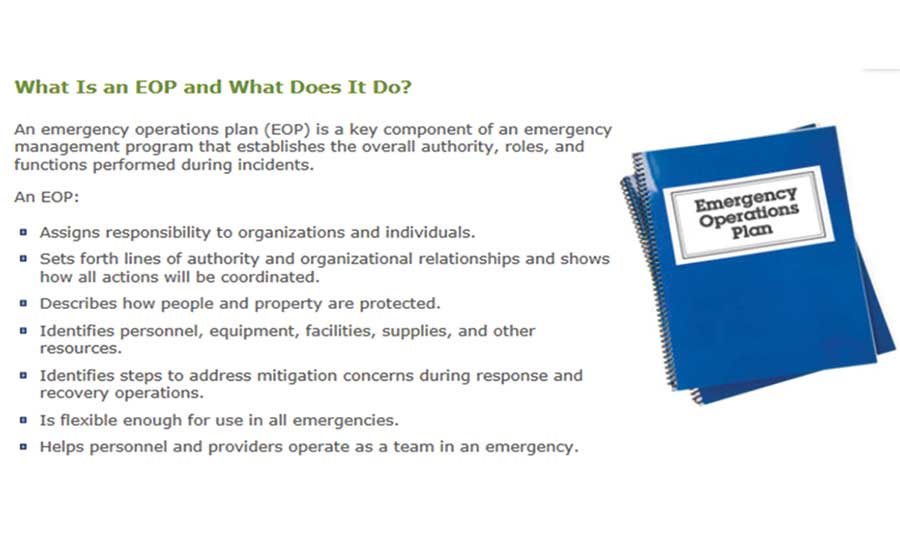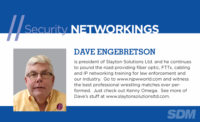Proverbs 27:12 – A prudent person foresees the danger ahead and takes precautions. (New Living Translation)
As electronic security industry professionals it is easy to become overwhelmed with the advances in hardware and software being provided by our manufacturers. For example, go to any product show and visit a few surveillance camera vendors. Within a few minutes the discussions become a horse race that can quickly become meaningless. Every manufacturer strives to deliver the best their technologies can offer, but I believe that we have lost sight of what the real purpose and value of our installed systems are and can be for our clients.
The true value of electronic security systems is how they can contribute to the protection of our clients’ personnel and property. In simple terms, video surveillance, access control and paging/intercom systems need to be considered as vital elements that can help deter, detect and defend clients from damage, theft and danger. It’s more than how many cameras and what are the resolutions — what matters is how live and recorded information can be used in critical situations.
While I’ve been thinking along these lines for a while, it took an encounter with Jerry Wilkins of Active Risk Survival Inc. to really open my eyes to this topic. Wilkins is a former law enforcement officer and alarm company owner who provides intensive training for first responders who may someday have to deal with an active shooter or hostage situation.
Wilkins believes that our industry needs to consider how electronic security systems can be utilized by first responders to help save lives and property during active criminal events. End-users and their associated police departments need to be fully versed in what their systems can do to minimize loss of property and potentially lives when there is a real-life criminal situation occurring.
When it comes to schools and commercial buildings, astute electronic security professionals will design systems that can help deter criminals from attempting an act, detect intrusions via surveillance cameras or motion detectors and help defend and protect the people in the building.
Surveillance camera systems with related VMS software can provide a critical component to the “defend” concept by displaying “situational awareness”; i.e., what’s going on in the parking lot or outside the protected area. Access control systems can be quickly set to lock down doors in the event of a crisis, potentially “deterring” movement by the bad guys. Paging systems are critical to the “defend” concept by providing instant information to building employees or residents.
Wilkins talked about the San Bernardino shooting incident as an example in which better usage of the existing security system could have accelerated and assisted the first responders on the scene. Not knowing that the shooters had already left, the responding officers were checking all rooms and entrance/exits in the building. According to Wilkins, the officers were toiling at breaking into locked fire exit doors until one officer obtained an access control card which allowed quick entry for the search parties.
Providing electronic security systems is not enough; we need to become proactive with our clients to help them fully utilize their systems when a crisis occurs. While no one likes to think “today’s the day the stuff hits the fan,” we need to change our thinking and presentations to our potential clients so that the systems that are installed can be used quickly and accurately when they are needed most.
In many jurisdictions Knox boxes are required that contain keys and other information for fire departments when they are responding to a fire notification. Shouldn’t there be another Knox-type locked box that contains access control credentials and information about the availability of live surveillance video? With a majority of IP cameras being programmed with Internet access, responding officers could fire up their smartphones and start immediately viewing the live cameras, locating personnel and possibly the criminal(s) within the building or campus. Would the small investment in the locked box and some training sessions/demonstrations with the first responders help limit damage and save lives? I think the answer is a resounding “Yes.”
FEMA has a document which details the concept of the “Emergency Operations Plan” (EOP) that should be created for every public or private building or campus that may be subject to active shooter or other criminal activity. Here’s a simple explanation of the EOP concept.
Unfortunately we live in a world that seems to get more violent and dangerous on a daily basis. While some would point to the 24-hour news cycle that makes everything that happens in the world a “big deal headline,” the reality is that our institutions, schools, businesses and other public areas are, in most cases, highly vulnerable to disruptions and attacks, whether they are caused by criminal elements, failures of basic services, or weather-related disasters. Do you really think the bombs and attacks will stay away from North America, that the oceans will protect us as they did one hundred years ago? Our history from Oklahoma City to New Orleans to Boston to Sandy Hook shows that we are not shielded from this turbulent world.
The responsible and professional people in the electronic security business must grasp this major concept that our systems need to become active tools to help first responders stop or reduce the damages to people and property that can and will occur. As an industry we need to see our systems as a vital part of a comprehensive security program that includes security systems, end-users and first responders, and most importantly that all parties are trained and made familiar with the abilities of our electronic systems to help protect the public.
Now if you are a security systems salesperson or in management, you might be thinking, “Gee, Dave, what’s in it for me?” I firmly believe that by becoming well-versed in the concepts of “detect, deter and defend,” and discussing Emergency Operations Plans with prospective clients, you will elevate your company and the systems you propose to a more attractive position that should sell more and larger systems. Do we really want to wrestle with competing dealers about megapixels and hard drive space, or do we want to truly provide effective security systems that can potentially save lives?
It’s time we start to do the right things to enhance the safety of our customers.
For more information and training classes in how these critical concepts can help your sales efforts, contact Jerry Wilkins at www.activerisksurvival.com.


